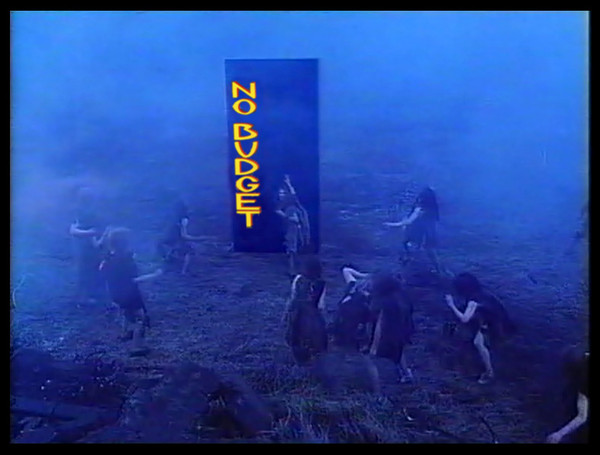History of the Festival
It all began with the LAG film offering basic support to the people involved in the making of films. It was there in 1985 that the founder of the festival, Markus Schäfer, developed his concept of an evening of short films, which he presented to the director of the Metropolis cinema, Heiner Roß. The works, partially created within the LAG, partially submitted after an appeal in local magazines, did not only succeed in convincing Roß because they didn’t smell of academia but also triggered the spontaneous rating that lead to the original name and spirit of the festival. With the then-emerging Low Budget Film Festival in mind, Heiner Roß said: “If they are Low Budget, then this is No Budget”.
No sooner said than done. A movie night was scheduled and thanks to a brimful cinema, the decision to have a follow-up in the next year was a no-brainer. In 1987 the festival became more than a single movie night for the first time. A development that hasn’t stopped to this day had begun. The event increased in both notoriety and number of submissions. A possible early termination of this development was prevented due to a completely different kind of intervention.
Only due to an indemnity bond by the Hamburg film fund and subvention from the GAL and the SPIEGEL, the 1987 festival could take place. Remarkably, Markus Schaefer’s work used to be unsalaried for eight years until the foundation of the ShortFilmAgency. Looking back, these things look like egg salad with caviar substitute. After all, the city didn’t ask Schaefer to make the festival happen, at least until it started to grant subsidies one year later.
Since then, the festival passed through several phases, always staying unerringly dedicated to the uncovering of short films, without limitation of contemporary screening formats and other categorisations. The art form that “asserts its radical artistic claim within and without the film industry. Which developed, tested and ripened almost every new element of filmic language and which infiltrated all fields of the creation of films”. In short: “The nucleus of film”. (Heiner Roß)
The festival continuously expanded its range, always trying to discern between fashion and relevance. In 1988, film making under aggravated conditions was introduced with the Three-Minute-Quickie. After the end of the 80s saw more and more professional submissions to the festival, a four years long transitional phase with a special series called “Steppin’ Out” lead to the implementation of the International Competition. In 1995 and long before others elsewhere assigned it to cinema, a line of programmes dedicated to Digital Video was started. This programme was terminated after ten years, at which point this cinematic game reserve had lost its raison d’etre. Along with the foundation of the Teams Radikaler Anhänger Sehenswerter Heimvideos, and in staying true to the original NoBudget competition, it showed that beyond the world of academic schooling a lively and untrained parallel cosmos exists in which the one thing that any idiot can access on command without presenting a visual vendor‘s tray had always been realised: Authenticity.
Insertion: The KurzFilmAgentur e.V. emerged in 1992 from the festival. Propagating short films all year-round and in a widespread fashion, it offered film makers an opportunity to create an income through their work. The KurzFilmVerleih had increasing success in reintroducing the supporting film to the cinemas before shortly afterwards the KurzFilmVertrieb established the distribution of screening rights for TV-stations and later online broadcasts. Yet the prejudice that this filmic form is gratis, or as some smart asses think worth no more than the privilege of delivering content for their platforms, is widespread and must still be fought at every turn.
The foundation of the KFA also lead to more and more people knowing the true promise of compensating for inadequate working conditions with the art of improvisation, resulting in some of them abandoning their posts earlier and some later. This way, the office chairs have always kept cosy and warm.
In 1995 the festival introduced a children‘s programme that eventually evolved into the Mo&Friese children‘s short film festival. In 2003 it offered a starting point to the by now highly successful “A Wall is a Screen”, anticipating the debate of the last two years on the future of the cinema as a location. By setting up a club as an meeting point for every evening of the festival, it strengthened the festival character.
Understandably, you always end up celebrating yourself, without neither losing sight of the importance of the films nor acting as if there wouldn‘t be anything else to do. After all, there is a reason that in the mid-90s one of the jurors came to the comparative appraisal that elsewhere you feel like leaving a burial upon departing.
So the festival‘s reputation of being a place where all the people forming such an event can joyfully gather has strengthened over the years. Film makers and guests were treated in an equally friendly manner, no matter how smelly they were. For the one central point everyone could agree on was the celebration of the short film.
 Shortfilm Festival Archive Hamburg
Shortfilm Festival Archive Hamburg